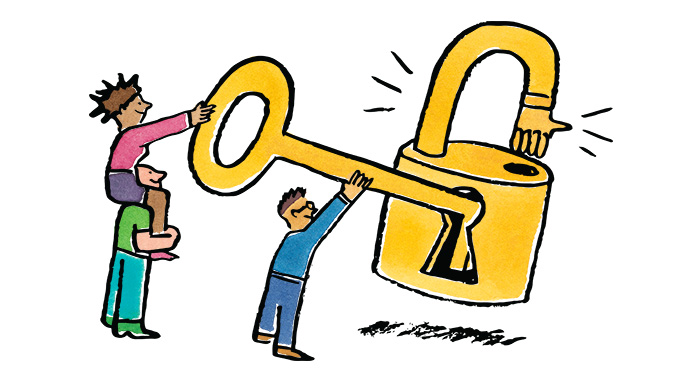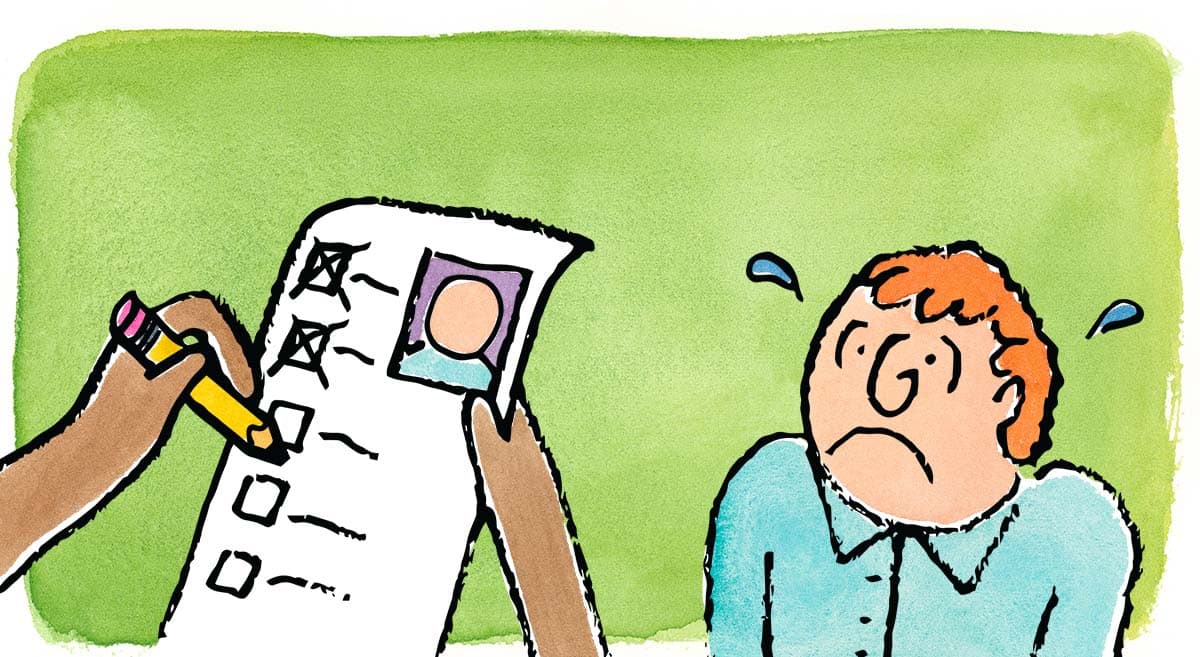
Great hiring is about bringing on the best, but unconscious bias often stands in the way. From affinity bias that keeps us hiring folks who look like us to confirmation bias affirming the parts of an applicant’s resume we like best, the truth is the interview is prone to all kinds of human error.
And there’s never been a better time to rethink it.
In a world where 1.1 billion jobs will soon be radically transformed, you need a futureproof recruitment process that brings you the best talent based on the best criteria, including real skills, capabilities, and potential — not how well someone can answer your interview questions.
An interview scorecard is one of many modern hiring tools that can help you bring in the best new hires in a way that is fair, consistent, and scalable.
Let’s take a closer look at the role of the interview scorecard in a structured hiring process, plus practical steps to create your own.
What we’ll cover
- What is an interview scorecard?
- The pros and cons of interview scorecards
- Create an interview scorecard in 3 simple steps
What is an interview scorecard? Your key to better hiring decisions
An interview scorecard is a tool used by hiring managers, recruiters and HR professionals to evaluate job candidates during an interview using a standardized list of job-specific skills and competencies, with a pre-defined rating scale for each.
The aim of an interview scorecard is to help interviewers remain objective by keeping the focus on skills and providing a structured approach to evaluating candidates’ responses. It is usually part of a larger structured interview process.
With a clearly defined scoring rubric, an interview scorecard also helps ensure consistency and fairness in the hiring process by providing a standardized evaluation method for each and every candidate.
Interview scorecards can be used to compare interviewees to identify the best fit for the job and help hiring teams make better hiring decisions in less time.
What should be included in an interview scorecard?
Most interview scorecard templates include a list of job-specific competencies or skills and a rating scale to help interviewers evaluate a candidate’s answers.
The important thing to remember is that the purpose of the interview scorecard is to evaluate the skills and competencies that matter to the role — not your personal preference.
For example, unless the job in question involves shaking peoples’ hands, you probably don’t need to rate the firmness of a candidate’s handshake.
Instead, you may want to look at other competencies, such as the candidate’s:
- Introduction
- Knowledge of the company
- Understanding of the role
- Technical skills
- Character traits
Each broad category can be broken down into detailed skills and competencies that are mapped to specific interview questions.
This could include strong communication skills for your open sales roles or an adept understanding of Javascript for your software engineering roles. Every interview score sheet will look a little different depending on the specific role you’re looking to fill.
For each competency, the interviewer uses the scorecard to rate the candidate's performance. Depending on the interview scorecard rubric you choose, your rating scale can be as simple as assigning a thumbs up / thumbs down or as advanced as a five-point Behaviorally Anchored Rating Scale (BARS).
If your hiring process also includes a talent assessment or personality test, you may want to adjust your interview scorecard to avoid duplicates in your candidate evaluation process. For example, you could use a coding test as a pre-interview assessment, then focus your face-to-face time in the interview to get to know more about the candidate’s decision-making and problem-solving skills.

Should interview questions be scored?
Though there are some drawbacks to the interview scorecard, the broad consensus among many HR experts is, yes — you should use candidate scorecards to improve the strength and fairness of your hiring process.
“Most hiring managers will interview each candidate a bit differently, even if it's for the same position. This has huge bias issues and can be discriminatory,” explains HR expert Tim Sackett.
According to experts like Tim, candidates are more likely to give their best when they're presented with a clear and transparent interview process.
The pros and cons of interview scorecards
As part of a broader structured hiring process, interview scorecards can deliver a host of benefits, including reduced hiring bias, accelerated time-to-fill, and better hiring decisions based on data — not emotions.
But the interview scorecard isn’t without its drawbacks. Here’s a closer look at the pros and cons of using interview scorecards in your hiring process.
Pros
- Focuses on job-related information only
- Enhances fairness and consistency
- Provides clear documentation
- Helps define specific role requirements
- Allows for improvement in the hiring process
- Supports collaboration within the hiring team
- Enables clearer decision-making
Cons
- Limits eye contact with the candidate
- Can interrupt the natural flow of the interview
- Restricts opportunities for deeper discussion
- Requires time to create and prepare
- Notes must be clear and thorough
- Rating answers requires attention to detail
- Could lead to subjective scoring
The key to making the most of your interview scorecards is to make sure they are clearly defined and adopted by all members of the hiring team.
If your rating system is confusing, or your hiring managers are all using different sets of interview questions, you’ll have a much harder time reaping the benefits of a structured, objective interview process.
Create an interview scorecard in 3 simple steps
Step 1. Identify competencies based on job requirements
To create the right set of criteria for your interview scorecard, start by identifying the key competencies for the role in question.
Remember, the point of the interview scorecard is to hone in on the core competencies related to the role. If you don’t need your devs to wine and dine your prospects, don’t rate them on their handshake or communication skills.
Using your job description as a guide, select the three to five most important skills, characteristics, and competencies you should be paying close attention to in the interview. Then group them into broad categories, like Emotional Intelligence, Curiosity, and Self Motivation.
If you’re using an applicant tracking system (ATS) to track and streamline your interviews, make sure your scorecards can be easily customized for the technical and soft skills required of each specific role.
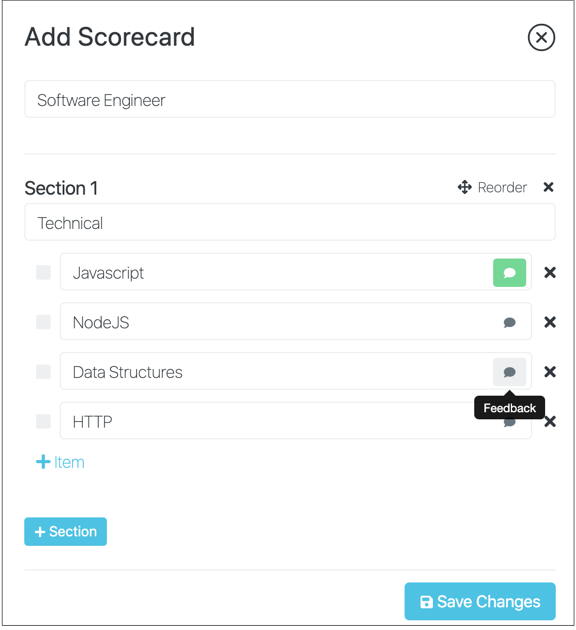
Step 2. Map competencies to your interview questions
If you haven’t already, collaborate with the rest of your key stakeholders and hiring team to make sure your interview questions are aligned with the competencies on your scorecard.
For example, if you’re hiring for a customer service role that requires a strong ability to communicate with frustrated customers, you might want to add the interview question, “How do you manage and prevent stress in a job?”
Whatever role you’re hiring for, the important thing is to choose your interview questions wisely.
“Some employers want to ask everything very early on. But quality vs. quantity of questions is the key criteria of successful hiring,” says HR expert Dr. Hitu Sood. Her advice is to ask yourself:
What is important to know at this stage about the candidate before we move to the next stage?
Take time to make sure you’re not repeating any questions that have already been answered in a talent assessment or phone screen interview.
To ensure that each member of your hiring team is sticking to the correct interview questions each and every time, create a simple interview guide that can be easily shared and accessed.
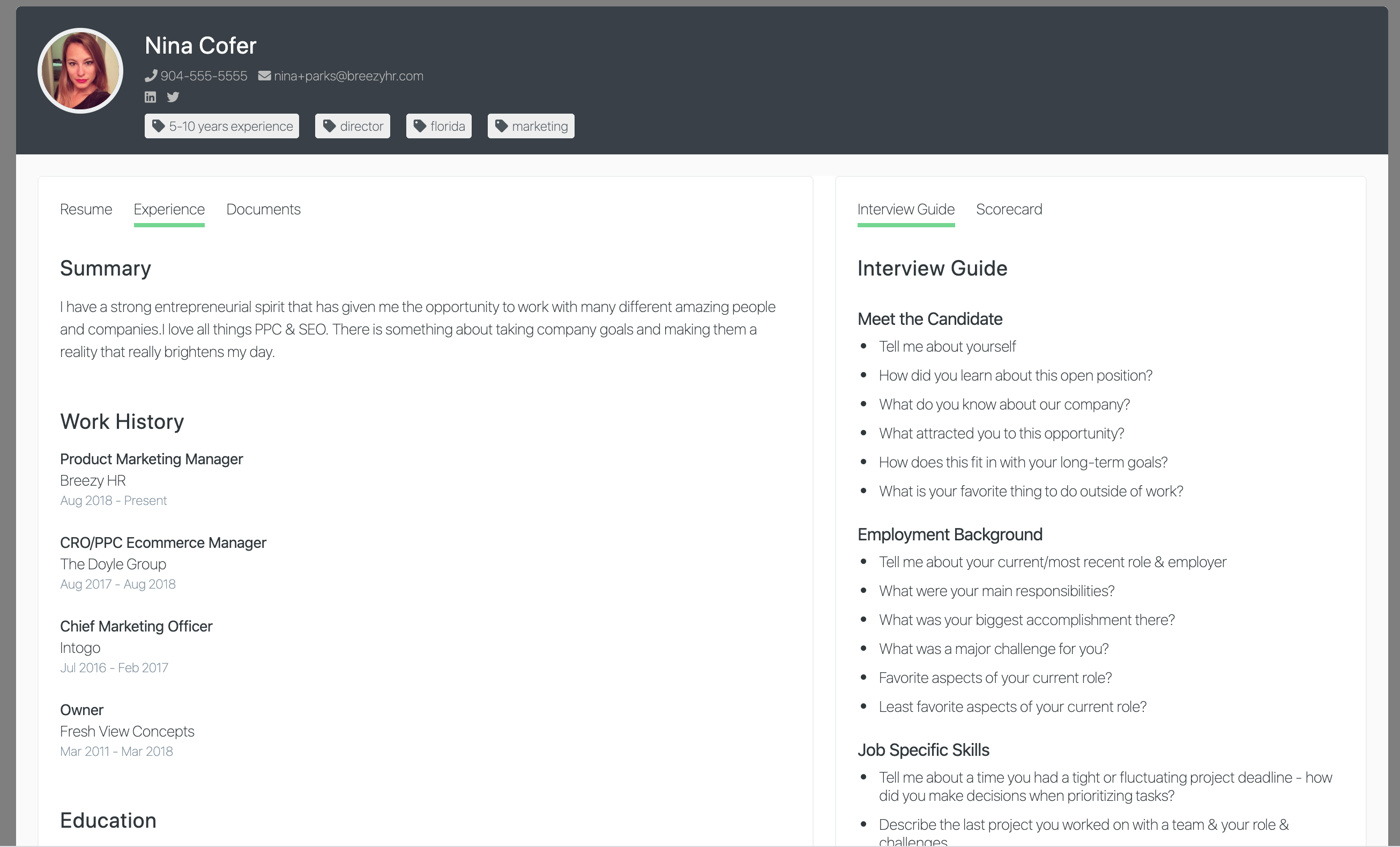
Step 3. Create your scoring framework
With a clear list of competencies and interview questions, it’s time to create your scoring system.
There are many different ways to score and rate your interviews. The most important thing is to create a rating scale that is clear and easy for your interviewers to understand.
The most common types of rating scales for scoring interviews are ordinal scales where you have an ordered list with a simple number for each rating. For example, 1 for poor and 5 for outstanding.
Having clear recommendation guidelines for how to interpret each rating is just as important as the rating itself. To keep every member of the hiring team on the same page, make sure you’ve given them a clear set of guidelines with an explanation of what each rating means.
Finally, make sure each member has an opportunity to add their written feedback via a comment field.
How to set up an interview scorecard in Breezy
If your team is already using Breezy to track and manage your candidates, it’s super easy to set up your custom scorecards.
From Recruiting Preferences, select Team Scorecards. Click + Scorecard to add a new scorecard and you’re good to go!
When you add your scorecard to a position, it will automatically appear in the profile of every candidate for that position.
Hiring team members can access the scorecard from the Scorecard tab of a candidate’s profile or even view them on-screen in real time during their video interviews with candidates.
Each member of the team can add their feedback using a simple thumbs-up, thumbs-down, and neutral rating, plus written comments:
👍👍 Very Good = 10
👍 Good = 7.5
⭘ Neutral = 5
👎 Poor = 2.5
👎👎 Very Poor = 0
Once each candidate has been scored, it’s easy for hiring managers to see them side-by-side to compare feedback.
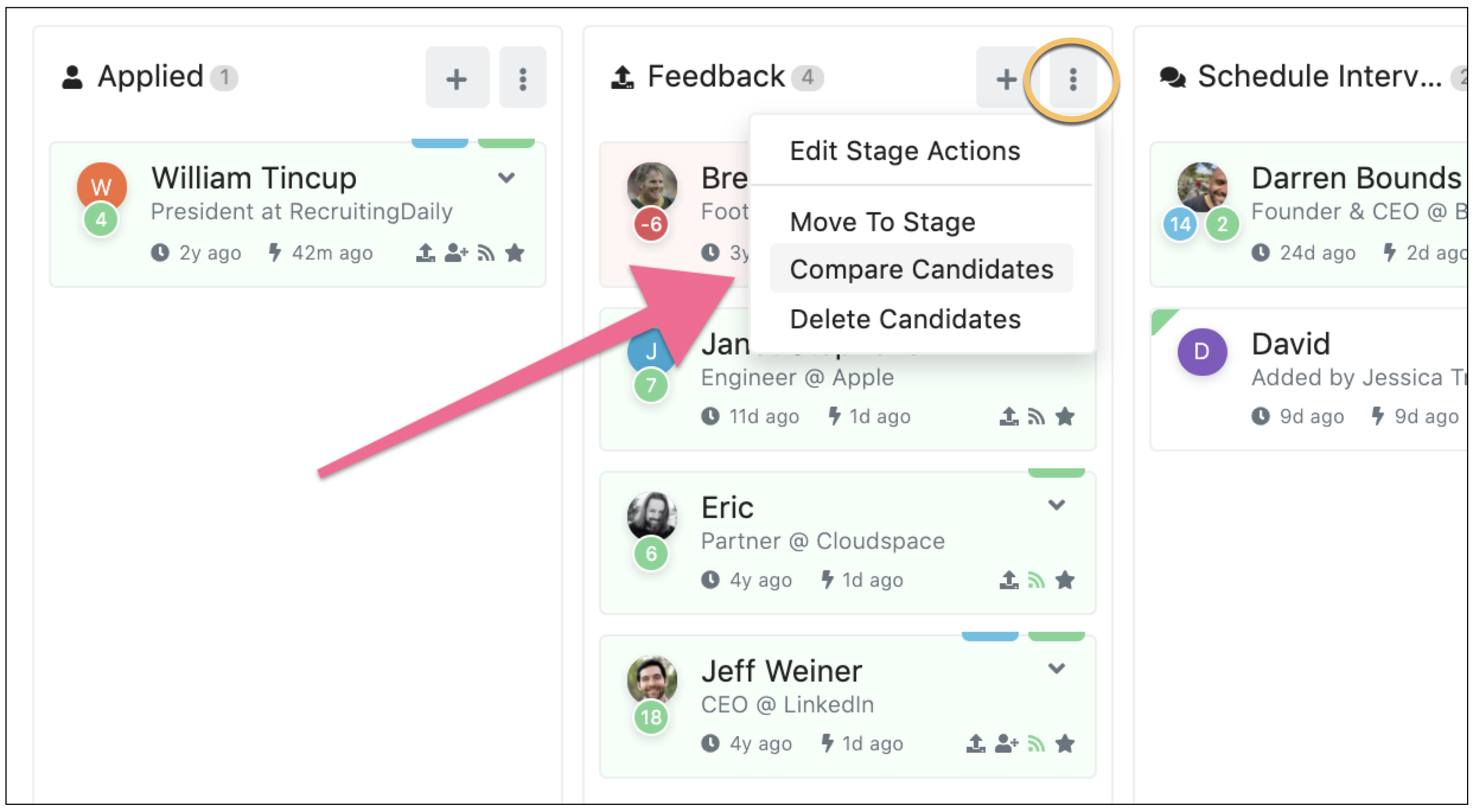
Still waiting on feedback? Breezy lets you automate reminders to hiring team members who haven’t added their interview feedback yet, so you can keep the process moving.
Better candidate scorecards, better hires
If you’re still not getting the candidates you need, you’re in the right place. Breezy is the candidate-friendly ATS that takes your hiring practices from good to great.
When you’re ready to elevate your talent acquisition strategy and deliver a truly inclusive recruitment process, Breezy’s easy blind hiring, AI-driven candidate matching, and customizable interview scorecards have everything you need to launch a fair and efficient hiring process.
Want to see what Breezy can do for you? Try it for 14 days at zero cost.



